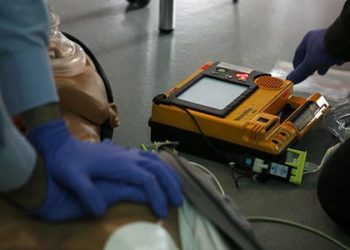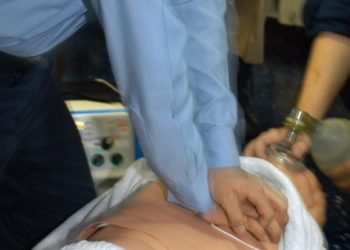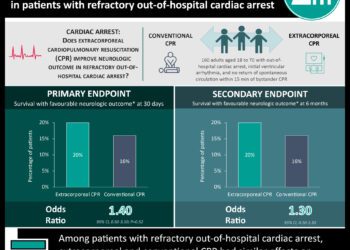AAP recommends life support training for general public
1. The Committee on Pediatric Emergency Medicine of the American Academy of Pediatrics (AAP) has published a statement in support of bystander CPR and AED training based on a review of their benefits in the public health literature.
2. Major recommendations include increased advocacy efforts by pediatricians to promote CPR and AED training in the school setting, as well as increased AED presence in the public sphere.
Statement Rundown: Despite shockable rhythms being less common overall in pediatric patients, the benefit on patient outcomes of early AED use and bystander CPR is well documented in all ages. Multiple studies show that children of various ages can be taught elements of CPR and retain necessary life-saving skills. In particular, studies show that young children can be taught and are capable of requesting help in life-threatening events, and older children can be taught effective CPR and AED use. The policy statement recommends universal CPR training as part of school curricula. Additionally, AED placement is recommended in the school setting and should focus first on high school athletic centers, if there is limited funding. Localizing initial AED placement to these facilities is recommended due to increased rates of shockable rhythms amongst active adolescents with cardiac arrest, compared to younger children. Finally, pediatricians should advocate statewide legislation requiring both CPR training and school AED placement if if there is none already in place.
Click to read the policy statement, published today in Pediatrics
Click to read the accompanying technical report, published today in Pediatrics
Image: CC
©2018 2 Minute Medicine, Inc. All rights reserved. No works may be reproduced without expressed written consent from 2 Minute Medicine, Inc. Inquire about licensing here. No article should be construed as medical advice and is not intended as such by the authors or by 2 Minute Medicine, Inc.







